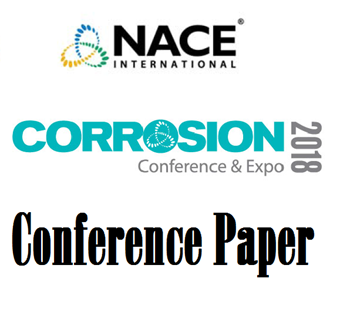Search
Mechanistic Study of the Effect of Iron Sulfide Layers on Hydrogen Sulfide Corrosion of Carbon Steel
Also Purchased
11266 Under Deposit Corrosion From Iron Sulfide
Product Number:
51300-11266-SG
ISBN:
2011 11266 CP
Publication Date:
2011
$20.00
51318-11027-Formation Mechanisms of Iron Oxide and Iron Sulfide at High Temperature in H2S Corrosion Environment
Product Number:
51318-11027-SG
Publication Date:
2018
$20.00
06644 KINETICS OF IRON SULFIDE AND MIXED IRON SULFIDE/CARBONATE SCALE PRECIPITATION IN CO2/H2S CORROSION
Product Number:
51300-06644-SG
ISBN:
06644 2006 CP
$20.00




